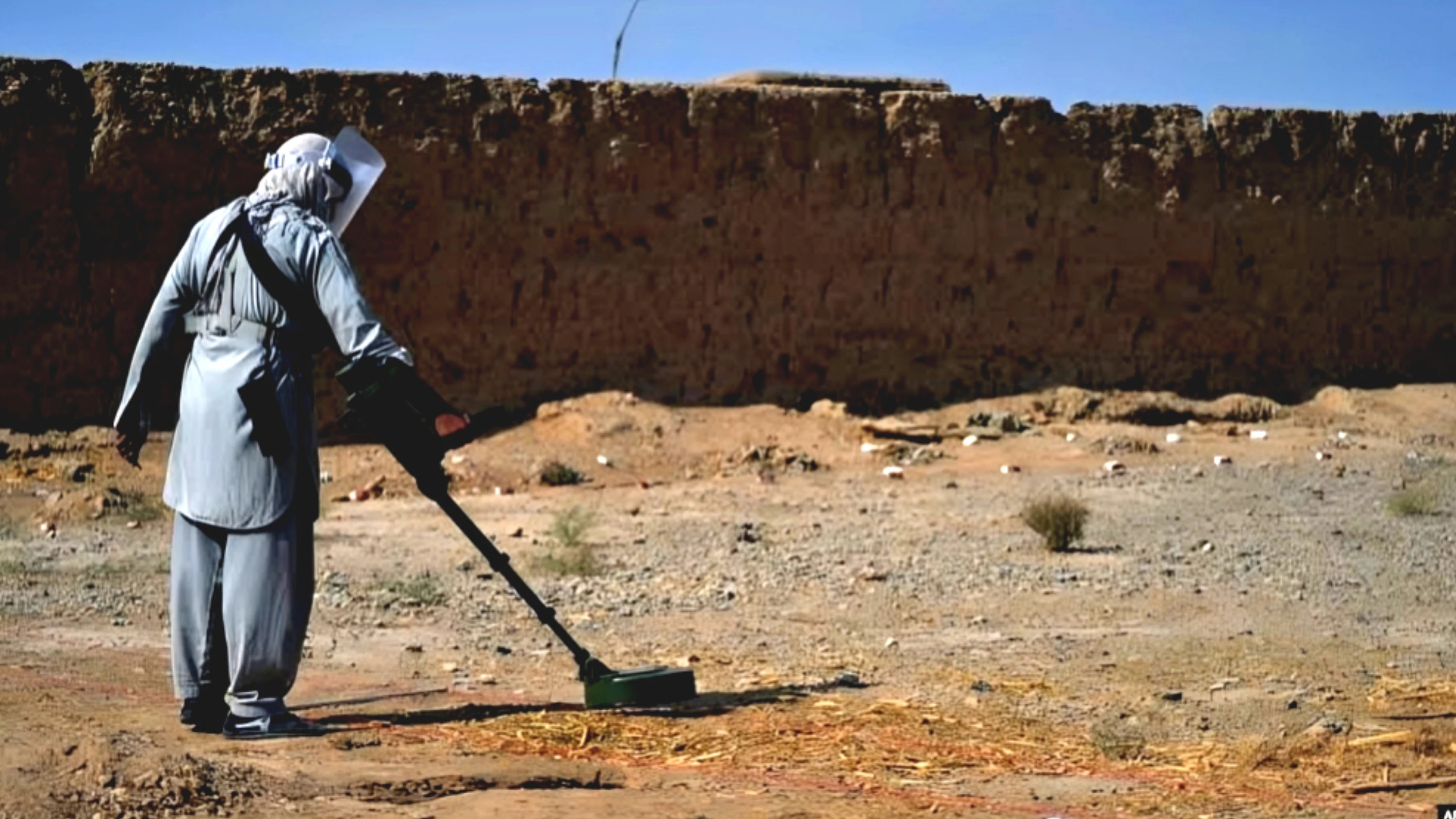Report: The International Committee of the Red Cross (ICRC) has reported that hundreds of Afghans, the majority of whom are children, have been killed or injured due to landmines and unexploded ordnance (UXO) left behind by past conflicts.
According to the ICRC, 251 incidents related to landmine and UXO explosions were recorded in Afghanistan during 2024. These incidents resulted in 544 casualties, of which 434, or 76%, were children. The organization warns that the actual numbers could be higher, emphasizing that landmines and UXOs continue to pose a "deadly threat" to Afghan communities and disrupt daily life.
Katrina Ritz, head of the ICRC delegation in Afghanistan, stated, "The landmines and explosive remnants of war not only disrupt the daily lives of people but also hinder economic development and cause heartbreaking tragedies, especially among children." She further expressed concern that reduced financial support and resources for mine clearance efforts have worsened the situation, increasing risks and potential casualties.
Ritz called on the international community and humanitarian organizations to provide more assistance to efforts aimed at clearing landmines and unexploded ordnance, as well as tackling "weapon contamination." The ICRC reiterated its commitment to playing its role in addressing this crisis.
Meanwhile, the United Nations Assistance Mission in Afghanistan (UNAMA) also highlighted the severe impact of explosive remnants of war, stating that Afghanistan remains one of the most affected countries in the world. Over the decades of conflict, tens of thousands of Afghan civilians have lost their lives or limbs due to landmines and UXOs, with children making up a significant proportion of the victims.
UNAMA issued this statement on April 4, marking the International Day for Mine Awareness and Assistance in Mine Action. The organization urged the global community to provide more support for mine clearance and rehabilitation efforts for victims.
"Mine clearance operations are not only extremely challenging and dangerous but also require significant financial resources. Additionally, rehabilitation programs for individuals with disabilities caused by landmines are of vital importance," UNAMA stated. It emphasized the need for international backing to ensure a safer, more stable Afghanistan.
UN Secretary-General António Guterres also acknowledged the global threat posed by landmines, stating that more than 100 million people worldwide are at risk from these deadly remnants of war. "Even after the guns fall silent, these mines continue to kill indiscriminately, harming civilians and obstructing development efforts," he said, calling for renewed global commitment to tackling the issue.
The UN previously reported in February 2024 that explosive remnants of war claim at least 55 casualties in Afghanistan every month. Approximately 3.5 million Afghans are currently at risk from landmines, with around 1,200 square kilometers of land still contaminated. In some areas, civilians live as close as one kilometer from these hazardous sites.
This ongoing threat particularly endangers children, who often encounter these explosives while playing, herding livestock, or collecting scrap materials. The UN's data shows that more than 600 civilians were killed or injured by explosive remnants of war in Afghanistan in 2024 alone, with a similar number of incidents recorded in 2022.
In response, the Taliban government in Afghanistan has announced a national demining plan. Authorities aim to complete a survey of all contaminated areas within three years and fully clear landmines within five years. However, the lack of precise data on the number of landmines and the specific locations of contaminated areas remains a significant challenge.
Landmines have been a persistent issue in Afghanistan since the Soviet invasion in 1979. Over the years, various factions, including the Mujahideen and other armed groups, have extensively used mines. During the Taliban's first rule, both the Taliban and their opponents deployed landmines to impede enemy advances. The past two decades of conflict have further exacerbated the problem, leaving vast areas of Afghan land laden with explosive hazards.








